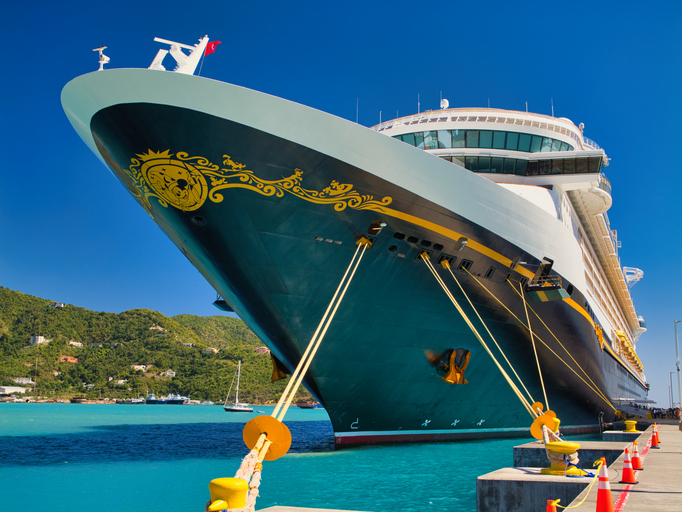On June 29, 2025, a startling incident occurred aboard the Disney Dream, a popular cruise ship operated by Disney Cruise Line. A five-year-old girl accidentally fell from the ship’s fourth deck into the ocean near Fort Lauderdale, Florida. In a moment of quick thinking, her father jumped overboard to save her. Thanks to the rapid response of the ship’s crew, both were rescued unharmed, demonstrating the critical role of effective safety protocols at sea. This event, widely discussed on platforms like X and reported by sources such as MickeyBlog, prompts a closer examination of passenger safety measures, crew preparedness, and the broader implications for the cruise industry. What lessons can be drawn from this incident to improve safety on cruise ships?
The Incident: A Swift Rescue Amid a Frightening Moment
Reports from X and Disney Cruise Line’s official statement detail that the incident occurred around 11:30 AM when the young girl lost her balance while sitting on a railing. Her mother alerted the father, who immediately leapt into the water to rescue her. The Disney Dream crew acted swiftly, deploying life preservers and a lifeboat within minutes to retrieve both passengers. Video footage shared on X captured the rescue, highlighting the crew’s efficiency and the ship’s advanced detection systems, including thermal cameras and micro radars, which aided the operation.
This close call, while resolved successfully, underscores the unpredictable nature of accidents at sea, even on family-oriented vessels like the Disney Dream. The incident raises important questions about how cruise lines can prevent such occurrences and ensure passenger safety.
Safety Protocols: Strengths and Areas for Improvement
The Disney Dream incident showcases both the strengths and potential gaps in cruise ship safety protocols. The crew’s rapid response and the use of advanced technology were instrumental in the successful rescue. Disney Cruise Line commended the crew’s “exceptional skills and prompt actions,” which align with industry standards set by the International Maritime Organization (IMO). These standards require regular safety drills, crew training, and accessible life-saving equipment like lifeboats and preservers, all of which were effectively utilized in this case.
However, the fact that a young child could access a railing and fall overboard points to potential vulnerabilities. Cruise ships are equipped with high railings—typically at least 42 inches tall, as mandated by the Cruise Lines International Association (CLIA) —to prevent accidental falls. Yet, this incident suggests that additional safeguards, such as netting or increased supervision in family areas, may be needed to protect vulnerable passengers, particularly children. A 2023 report by the U.S. Coast Guard notes that overboard incidents, though rare, occur approximately 30 times annually across the global cruise industry, with children and intoxicated passengers at higher risk.
Crew Training and Emergency Response: The Backbone of Safety
The Disney Dream crew’s swift action highlights the importance of rigorous training. The IMO’s Safety of Life at Sea (SOLAS) convention mandates regular man-overboard drills to ensure crews can locate and rescue passengers in distress. Technologies like thermal cameras and micro radars, as noted in X posts, enhance these efforts by enabling consummation in challenging conditions. This incident demonstrates how such systems, combined with well-trained crews, can make a life-saving difference.
Still, prevention remains key. While the crew’s response was exemplary, the incident could have been avoided with stricter oversight of passenger areas. Cruise lines must balance open deck access with the need to protect passengers, especially children, who may not recognize the dangers of railings or open spaces.
Broader Implications for the Cruise Industry
The Disney Dream incident serves as a reminder that safety is an ongoing priority for the cruise industry. According to CLIA, overboard incidents have decreased by 50% over the past decade, reflecting improvements in safety measures. However, this event highlights areas for further enhancement. Cruise lines could explore technologies like wearable tracking devices for children or increased surveillance in high-traffic areas. Additionally, passenger education is crucial. Many incidents result from risky behaviors, such as climbing railings or excessive alcohol consumption. More comprehensive pre-boarding safety briefings could help mitigate these risks.
For families, this incident emphasizes the need for vigilance. Parents should closely monitor young children near railings and pools, and cruise lines could designate family zones with enhanced safety features. The Disney Dream’s family-friendly reputation makes this incident particularly striking, as passengers expect a secure environment for their children.
Legal and Financial Considerations
Incidents like this can carry significant legal and financial consequences for cruise lines. Passengers who experience harm or endangerment at sea may pursue legal action, especially if negligence is suspected. Firms like Brais Law specialize in representing passengers in cruise ship accident cases, advocating for those affected by inadequate safety measures or crew errors. While Disney Cruise Line’s response was effective in this instance, any perceived shortcomings could lead to lawsuits, reputational harm, and increased regulatory scrutiny.
Moving Forward: Enhancing Safety at Sea
The Disney Dream overboard incident of June 29, 2025, underscores the need for continuous improvement in cruise ship safety. While the successful rescue highlights the crew’s preparedness, the fact that a child fell overboard points to areas for enhancement. Cruise lines should invest in advanced technologies and training to prevent incidents and ensure rapid responses when they occur. Passengers, too, must take responsibility by following safety guidelines and staying aware of their surroundings.
For those impacted by cruise ship incidents, legal support is available. If you or a loved one has been affected, consulting with experienced attorneys, such as Cruise Ship Accident Lawyers in Seattle, can help navigate maritime law and seek appropriate compensation.
The Disney Dream incident is a call to action for the cruise industry to prioritize safety through technology, training, and passenger education. By learning from such events, cruise lines can ensure that passengers enjoy their vacations with confidence, knowing their safety is paramount.






